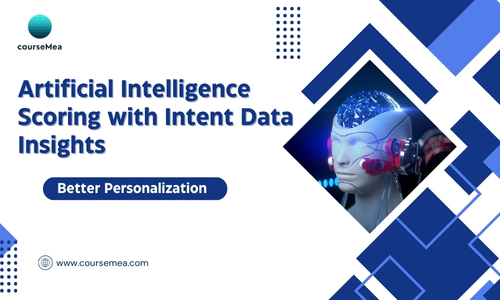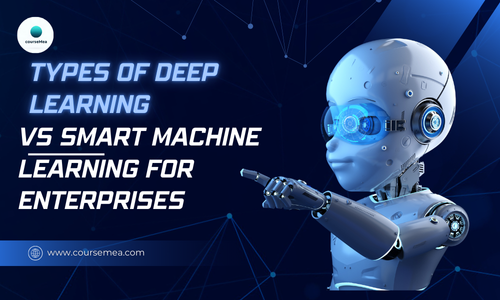Table of Contents
ToggleIntroduction
Technological Advancement: What is Deep Learning & How it Works—this is one of the important questions in the context of today’s innovation with AI. Deep learning is a subset of artificial intelligence with systems and techniques that find a way of functioning like the human brain to process, detect patterns, and make decisions with relatively little human interference. Every company that is interested in automation, along with many other smart technologies, has a reason to understand deep learning for progressing towards the age of futuristic technological advancement. From self-driving cars to voice assistants, deep learning is having a great impact on the ways humans interact with their outside world.
Deep learning promotes Technological Advancement: by creating features like cars that drive themselves, talking assistants, and improved diagnosis in medicine. But what exactly is deep learning, and how does it operate? There is a clear explanation in this article.
What is Deep Learning?
Technological Advancement: Deep learning is a branch of machine learning that uses AI, trained by the human brain, to find data & patterns. These networks learn from the available data and tend to get better over time; they can be used for applications like language processing and picture identification.
Deep learning develops AI, increases automation, and helps to improve decision-making. It pushes applications including recommendation systems, medical imaging, and fraud detection, improving innovation and performance.
Deep learning differs from machine learning and AI. Technological Advancement:
- AI: This general term describes machines that can imitate humans.
- Machine Learning (ML): ML is a branch of artificial intelligence that permits computers to learn from data without written code.
- Deep Learning (DL): DL is a particular type of machine learning that makes use of deep neural networks to interpret raw data and improve decision-making automatically.
How Deep Learning Works?
- Data Collection & Preparation: Deep learning Technological Advancement: models require vast amounts of data to learn effectively. High-quality datasets improve accuracy and generalization. More data helps models identify patterns and make better predictions. Data is cleaned and formatted using techniques like normalization (scaling values) and augmentation (modifying images or text to increase variety).
- Building a Neural Network: A deep learning model consists of multiple layers of artificial neurons that process information. The structure of a deep learning model includes an input layer, hidden layers, and an output layer. The activation functions decide whether a neuron should activate. Common functions include:
- ReLU (Rectified Linear Unit): This helps prevent vanishing gradients.
- Sigmoid: This converts values into probabilities.
- Softmax: It is used in classifying tasks to assign probabilities to multiple categories.
- Training the Model: This involves adjusting its weights to minimize errors. It has two propagations:
- Forward Propagation: Here, the data passes through the network, and predictions are made.
- Back propagation: This model calculates errors and updates weights using optimization techniques.
- Model Evaluation & Fine-Tuning: After training, the model’s performance is assessed and improved. There are two types:
- Overfitting vs. Underfitting:
- Overfitting: This model has trouble remembering new information, but it can remember training data.
- Underfitting: This model is too simple and fails to capture patterns.
- Hyperparameter Tuning: Involves changing parameters like:
- Learning Rate: Controls how fast the model updates weights.
- Batch Size: This controls the number of samples the model can process at the same time.
- Deployment & Real-World Use: After the model has been developed, it is put to use in independent systems, such as medical imaging, and speech recognition.
Deep Learning vs. Machine Learning
Technological Advancement: Deep learning is a type of machine learning, but is more powerful for complex tasks like picture & speech identification. However, it has higher computing expenses, though.
If you have limited data, need explainable results, or lack powerful hardware, use machine learning (ML), but if you have large datasets, complex patterns to analyze, & access to GPUs for processing, use deep learning (DL).
| Feature Technological Advancement: | Machine Learning (ML) | Deep Learning (DL) |
| Complexity | Uses structured data and simpler models | Uses deep neural networks with multiple layers |
| Data Dependency | Works with small to medium datasets | Requires large amounts of data for accuracy |
| Feature Engineering | Requires manual feature selection | Learns features automatically from data |
| Training Time | Faster training on small datasets | Requires more time and computing power. |
| Interpretability | Easier to understand and interpret | Acts as a black box (hard to interpret). |
| Use Cases | Spam filters, recommendation systems | Image recognition, speech processing, and self-driving cars. |
Applications of Deep Learning
- Image Recognition & Computer Vision
- Face Identification
- Self-Driven Cars
- Natural Language Processing (NLP)
- Chatbots
- Language Translation
- Healthcare
- Disease Detection
- Drug Discovery
- Finance
- Fraud Detection
- Algorithmic Trading
Future of Deep Learning
- AI Automation and Self-Improved Models: Deep learning in the future will involve the creation of AI systems that can improve themselves. Without assistance from humans, these models will be able to refine their code, which will result to a better performance in AI applications.
- Function of Quantum Computing in Deep Learning: Quantum computing can handle complex numbers at rates that were never possible.Technological Advancement: This means that handling difficult problems in models will be more possible by merging deep learning with quantum computing.
- Ethical AI and Responsible Development: As deep learning progresses, it is important to make sure that they are used in the right way. Keeping openness, bringing AI systems into line with human principles, and considering partiality in AI models are all factors that are important to note. In order to build trust and confidence in AI applications, current research is trying to set the foundation for the responsible development and use of AI.
Conclusion
Technological Advancement: Deep learning is important in today’s technology, driving change across different fields. Its applications in picture identification, natural language processing, healthcare, and finance have changed industries and improved productivity. In the future, the future of AI automation, the inclusion of quantum computing, with a focus on ethics, will shape the future of deep learning, making sure it continues to benefit society in a good way.
Technological Advancement: continues to accelerate as deep learning evolves, offering smarter solutions and increased efficiency in daily life and business operations. From personalized recommendations on streaming platforms to intelligent fraud detection systems, deep learning is at the core of innovation. As research and development push boundaries, Technological Advancement: will further integrate deep learning into smart cities, education, and climate modeling, paving the way for a more connected and intelligent future.




